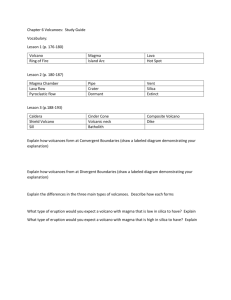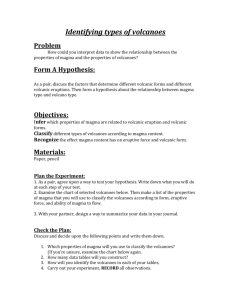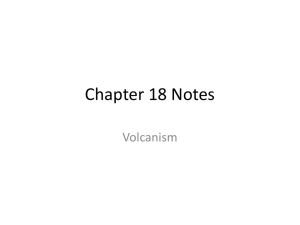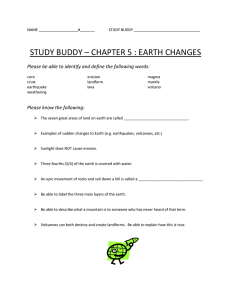Volcanoes - Independence High School
advertisement
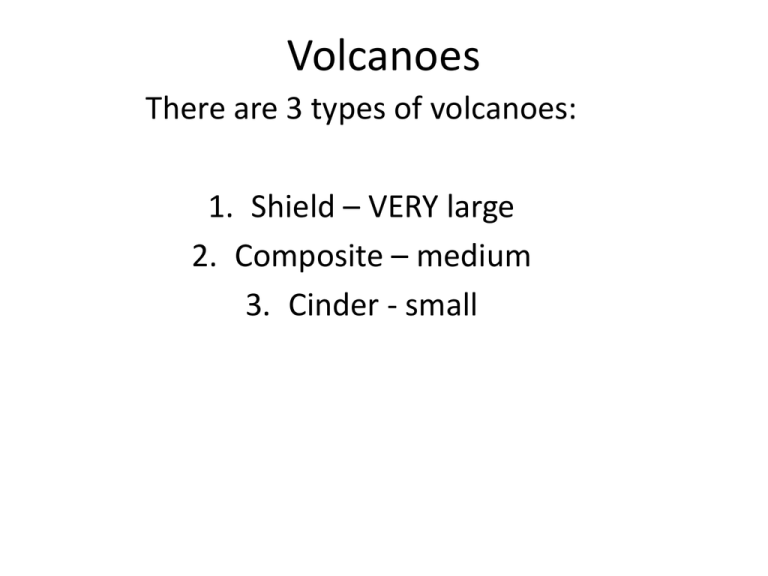
Volcanoes There are 3 types of volcanoes: 1. Shield – VERY large 2. Composite – medium 3. Cinder - small Differences between volcanoes Origin • Where does magma come from? • Shield – Basaltic magma forms deep down • Composite – andesitic and granitic magma forms from subduction zone • Cinder – granitic and andesitic magma formed at subduction zone. Content • What magma is made of? • Silica content – – Shield – low silica contentbasaltic – “runny” – Composite – high silica content – granitic/rhyolitic – viscous (thick) – Cinder – high silica content – granitic/rhyolitic – viscous (thick) Differences continued • Gas Content – Gas is held in rock because of high pressure underground (like CO2 in soda). When pressure is reduced the gas tries to escape. • Shield – low gas content because it cools so quickly – volcano therefore doesn’t have the explosive “power”. • Composite – high gas content kept underground therefore has much explosive power since gas escapes all at once. • Cinder – high gas content kept underground therefore has much explosive power since gas escapes all at once. Explosive Power • Shield – called “quiet” volcano due to its lack of explosiveness ( low silica and gas content) sputters out not viscous • Composite – explosive – very viscous so pressure builds up inside when gas is released the volcano explodes releasing pressure immediately. • Cinder - explosive – very viscous so pressure builds up inside when gas is released the volcano explodes releasing pressure immediately. Pyroclastic materials • Definition – particles produced in volcanic eruptions – Basaltic lava – viscous rhyolitic magma is charged with gases as the gas expands it blows fragments from the vent. Factors • Composition – • Temperature of magma – • Dissolved gases - Review Questions • 1. What factors determine the type of volcanic eruption? • 2. List the materials that can be ejected from volcanoes. • 3. Describe the three types of volcanoes.
